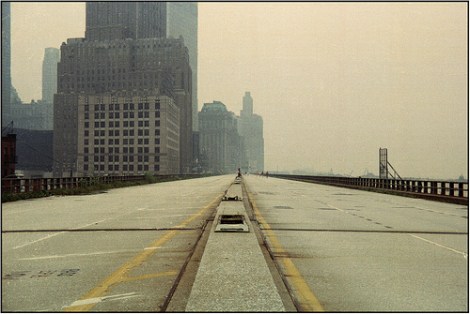Breathing well in Los Angeles is much easier than it used to be. Just try not to be a child near a freeway.
Last month, the National Oceanic and Atmospheric Administration (NOAA) made an announcement: The presence of certain air pollutants in Los Angeles has dropped consistently over the past half-century. Volatile organic compounds (VOCs) — key contributors to the ozone that comprises smog — have plummeted 98 percent since the 1960s. The list of ways that VOCs impact health is long. But even a big reduction in VOCs doesn’t mean L.A.’s air is clean — much less uniformly clean throughout the city.

The ideal freeway for kids’ lungs. (Photo by m.joedicke.)
The National Institute of Environmental Health Sciences (NIEHS) decided to figure out how air quality fluctuated throughout the city. Looking at the amount of ozone and nitrogen dioxide in the air, the NIEHS sampled air quality across Los Angeles. Its findings were stark [PDF].
We estimated that 27,100 cases of childhood asthma (8% of total) in [L.A. County] were at least partly attributable to pollution associated with residential location within 75 [meters] of a major road. As a result, a substantial proportion of asthma-related morbidity is a consequence of near-roadway pollution, even if symptoms are triggered by other factors. Benefits resulting from a 20% regional pollution reduction varied markedly depending on the associated change in near-roadway proximity.
To translate: More than 27,000 cases of asthma in children were at least partly due to how close the kids lived to a major road — and region-wide drops in pollution were much more noticeable at a distance from major roadways. The impact of pollution reduction was not uniform.
Nearly 18 percent of L.A.’s kids live within 75 meters of a major road, meaning that this is a big problem for the city. And not only for Los Angeles; the findings likely apply at least to some extent in other cities with major roadways.
This is another reason why fuel-efficiency standards for cars are important — not only to reduce gas consumption, but to reduce ground-level emissions. Cars on Los Angeles roadways still produce too-high levels of ozone and nitrogen dioxide, and still emit large amounts of particulate matter. The NOAA study noted that the reduction in VOC pollution was despite an increase in gasoline consumption, that the drop was due to improved systems within cars for filtering pollutants.
So imagine the benefit to kids living near freeways if gasoline consumption went down, too.



